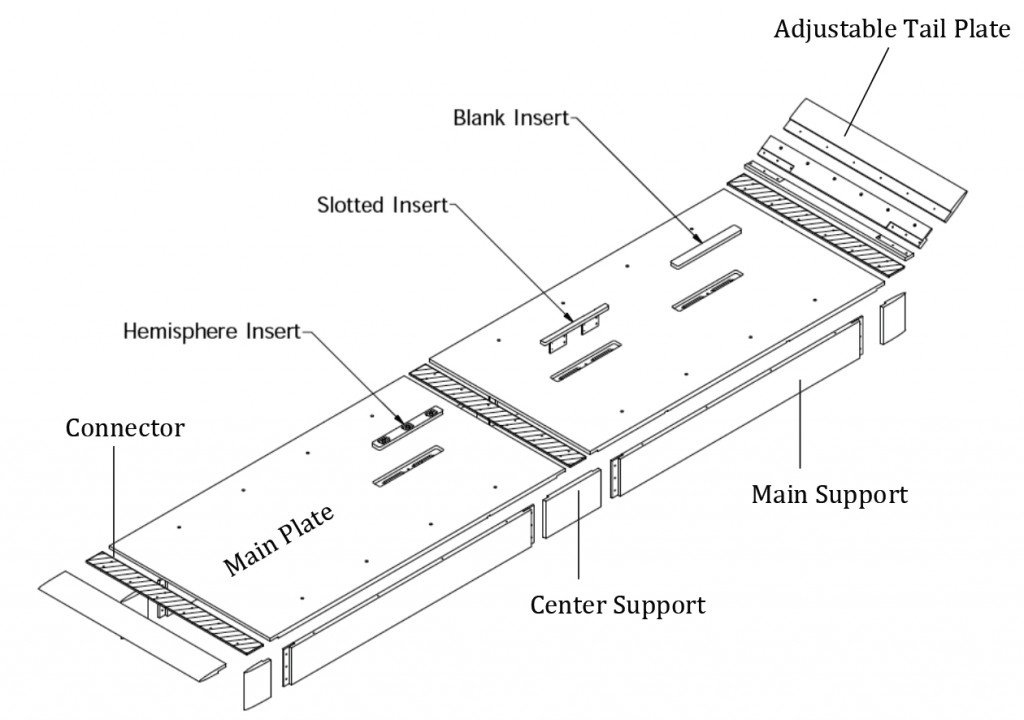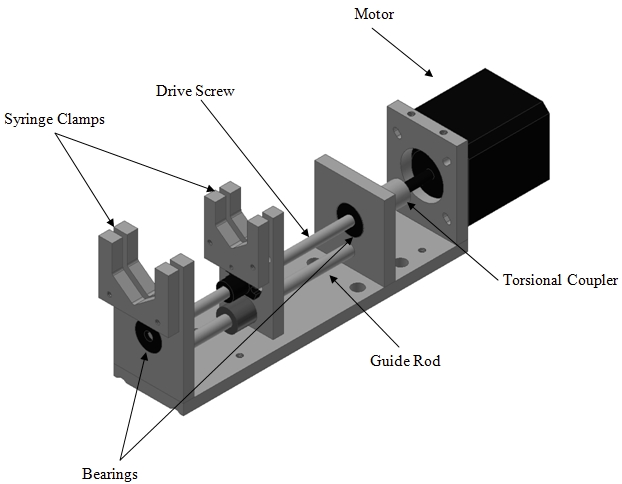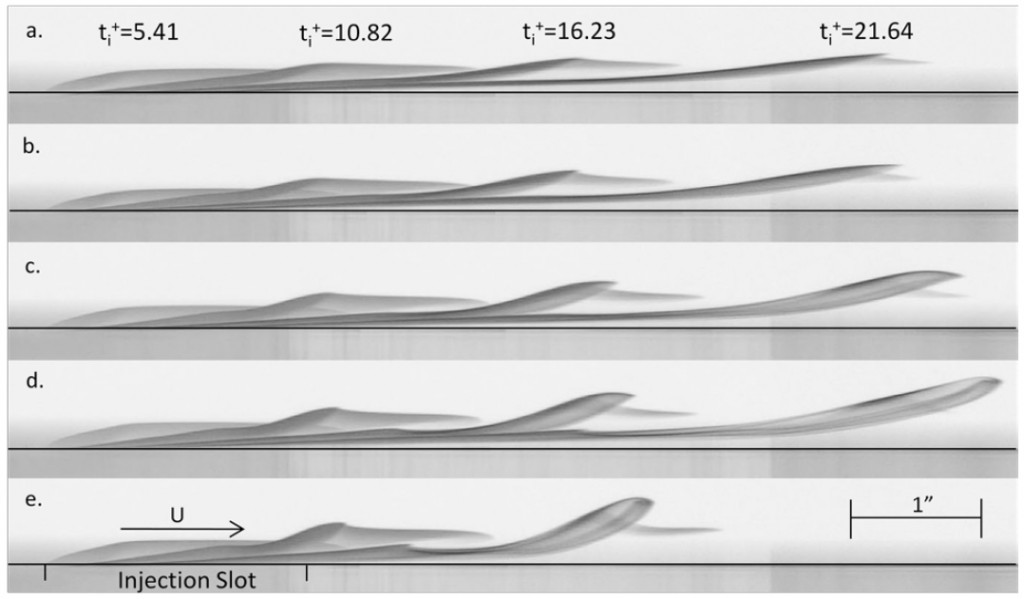 As flow moves over a solid surface a boundary layer forms which may be smooth and laminar, or unsteady and turbulent. I use the research water channel to investigate the organizaiton in turbulent boundary layers. In particular we have been examining hairpin vortices, which appear to be present at the initiation of transition to turbulence as well as once the flow is fully turbulent.
As flow moves over a solid surface a boundary layer forms which may be smooth and laminar, or unsteady and turbulent. I use the research water channel to investigate the organizaiton in turbulent boundary layers. In particular we have been examining hairpin vortices, which appear to be present at the initiation of transition to turbulence as well as once the flow is fully turbulent.
Mark Palframan (ME ’11) and Andrew Sanders (ME ’13) worked on the design of a modular test plate that is used to generate a laminar boundary layer and could provide multiple locations and mechanisms to generate a disturbance.
 Chris McKenna (ME ’12) and Andrew Sanders (ME ’13) worked on the design, fabrication and control of a linear actuator that would provide controlled injections of the fluid to cause the disturbances. This includes a nice GUI that has allowed subsequent students to control their injection conditions with ease.
Chris McKenna (ME ’12) and Andrew Sanders (ME ’13) worked on the design, fabrication and control of a linear actuator that would provide controlled injections of the fluid to cause the disturbances. This includes a nice GUI that has allowed subsequent students to control their injection conditions with ease.
 Chris McKenna (ME ’12) recorded a beautiful sequence of side-view visualizations that show how the development of a hairpin vortex is dependent on the injection conditions.
Chris McKenna (ME ’12) recorded a beautiful sequence of side-view visualizations that show how the development of a hairpin vortex is dependent on the injection conditions.
Rijan Maharjan (ME ’14) captured the interaction of two hairpin vortices. The image shows them intertwining and then merging to form a single larger hairpin. This work was presented by Rijan at the 2013 APS Division of Fluid Dynamics Annual Meeting during the poster session.